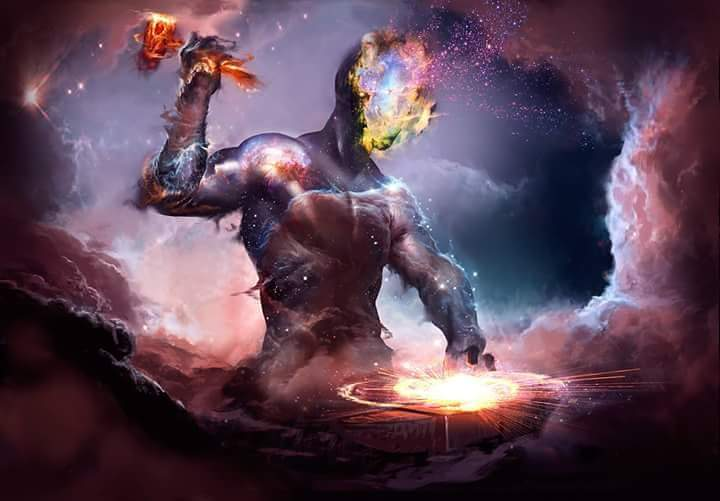
Many African religions believe there is one supreme God, however, the myths of several African countries say that after getting the world “prepared” for human life, God withdrew and stays withdrawn from people. According to a myth of the Dinka of South Sudan, God withdrew from the world after the first woman lifted her ,pestle to pound millet and struck the sky. This withdrawal introduced toil, sickness, and death, but freed humans from the constraints of God’s immediate control.
Africans had their own form of worship and religion before the Europeans discovered the continent and felt it necessary to introduce Christianity, through which they claimed to show Africans the “one true God”.
NYAME
In West Africa, among the Asante of Ghana, for example, the elders regularly pour drinks and offer prayers to Nyame, the Creator, giving thanks and seeking blessing.
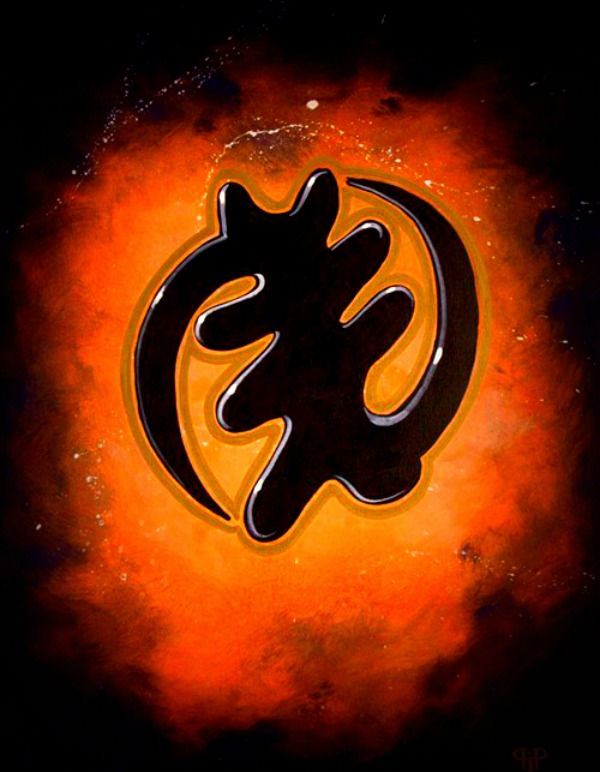
Nyame is said to be the Sky deity of the Akan people of Akanland (South Ghana), the leader of the Abosom, the Akan spirits and minor gods. His name means “he who knows and sees everything” and “omniscient, omnipotent sky god” in the Akan language; and “he who does not speak” in the Luyana language. Nyame is the maker of animals, forests and birds, portrayed as a benevolent god, aloof, and distant. The sun is his right eye, which he opens during the day, while the moon is his left eye which he opens at night.
One of Nyame’s creations was ,Kamunu, the first human being who was given the task of naming all other creations. The story of Kamunu goes, he was obsessed with his father, Nyame and wanted to be just like him. Learning how to make things grow, planting, etc. One day he saw Nyame making what he thought were weapons but really he was forging iron to make plowshares and scythes. Kamunu began creating knives and other sharp objects and went on a killing spree to test out his creations. It was said that instead of Nyame punishing him, he and his wife ran away multiple times to get away from Kamunu, but everywhere they ran, Kamunu followed. Nyame is said to have dreaded man since. The Lozi and the Akan ,share stories based upon Nyame. Kamunu found so many different ways to follow his God; making canoes to cross the river that Nyame crossed to get away from him. This shows us that man is full of creations and even if man is a horrible creation to Nyame, in ways, we are one of the best creations.
OLORUN
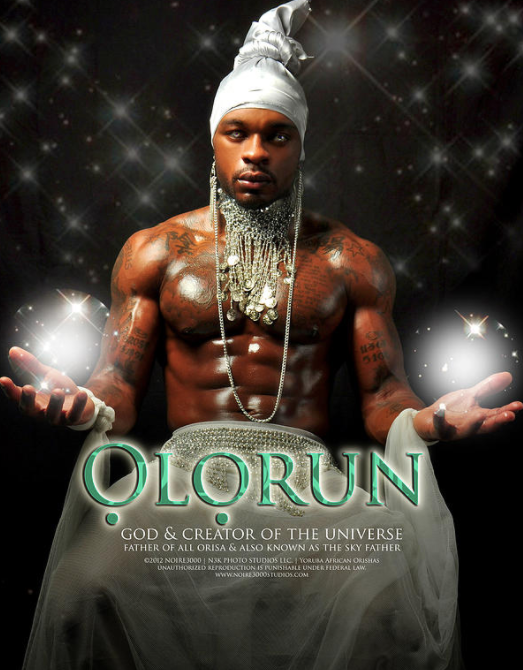
In Nigeria the Yoruba hold that the Almighty Creator, ,Olorun, who oversees a pantheon of secondary divinities, the O,risha. Olorun is active in Heaven and Earth and he is said to be the wisest and powerful God. According to Yoruba legend, Olorun was one of two original creator Gods; the other was the goddess ,Olokun. In the beginning, the universe consisted of only sky and marshy waters. Olorun ruled the sky and Olokun ruled the marshy waters below. Although there were said to be thousands of other Gods, Olorun had the most knowledge. A lesser God named ,Obatala, wanted to improve on Olokun’s kingdom even though Olokun was perfectly happy with it. Obatala went to Olorun and suggested land with fields, forest, hills, and valleys as well as living things. Olorun agreed that this would be good and gave Obatala permission to create land.
Obatala seeked guidance from Orunmila, the oldest son of Olorun, on how he should create such a land. He instructed Obatala to gather gold and make a chain long enough to be lowered from the sky to the water. He was then given a snails shell filled with sand, a white hen, black cat, and palm nut. Obatala began pouring sand on the water, releasing the hen then scattered it in different directions; everywhere the sand fell became dry land. Obatala then stepped onto the land and built a house. He grew palm trees from the palm nut and kept the black cat as companion. When Obatala got lonely, he built clay figures and Olorun breathed life into them. Many Gods came down from the sky to live on earth and Olorun made sure that they protected and listened to the prayers of humans. Olokun was upset for whatever reason and tried to flood the land but Orunmila used his powers to push the water away. Olokun then challenged Olorun to a weaving contest to see who was more powerful, but Olorun’s Agemo, the chameleon who carried messaged for Olorun, would change the color of its skin to match each of her weavings. When she saw that her messenger could duplicate her finest cloths she accepted defeat and agreed that Olorun was the supreme God.
MULUNGU
The ,Nyamwezi people of Tanzania in East Africa worship Mulungu as the god who created all things and who watches over the earth.
Mulungu, is thought to be
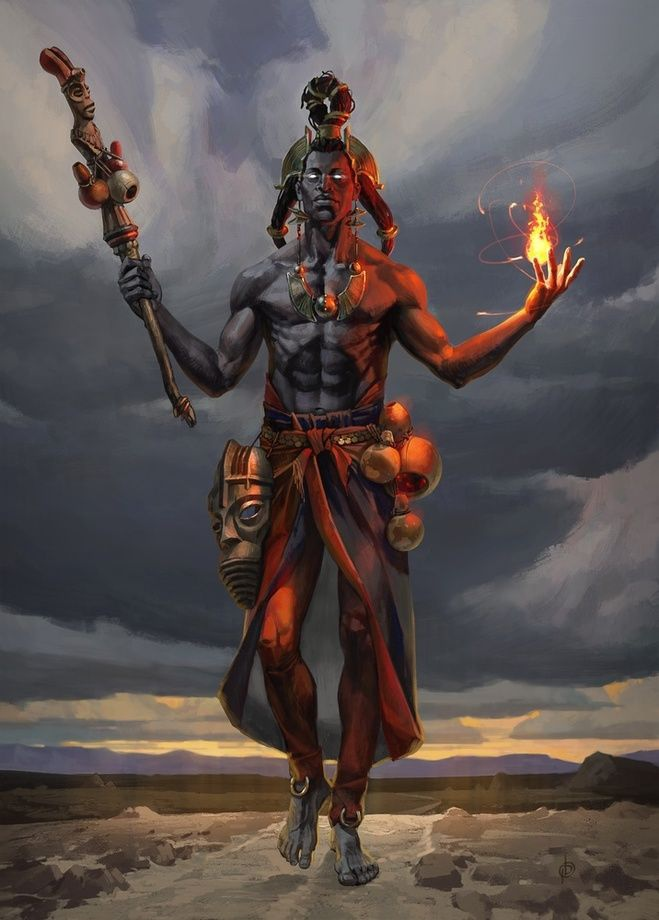
omnipresent but is sought only in prayers of last resort. Mulungu is a very distant god with no personal relationship with living beings. The legend goes, Mulungu once lived on earth but left and went to live in heaven because some people set a fire to the landscape, causing devastation and killing other people. Unable to climb the tree that linked heaven and earth, Mulungu asked Spider to help him travel up to the sky. Spider climbed up, spun a thread, and let one end of the threads fall to earth so Mulungu could live in Heaven.
It was said that Mulungu created two pairs of men. One pair, a man and a woman, came out of a termite hole. Another pair, a man and his wife, were thrown down by Mulungu from the clouds, bringing with them a cow, a goat, and a sheep. They fell down on a rock called Nsaue, southeast of Kilungu, and built a village. Both couples had children, who married amongst themselves and formed new families. From some of their descendants came ,Kamba clans.
The first human beings who came up out of the termite hole had various kinds of seeds in their left hands. They didn’t know how to properly plant these seeds and just put them in the ground. One year, a giant tree fell on the field and when they lifted the tree it created a huge dent in the field. When that particular crop ripened, the plants there were much more potent than the other places. This brought the idea to loosen the soil with a stickWhen the crop was ripe, it was found that the plants at the place where the big tree had fallen were much more vigorous than at other places, because the soil there was looser, bringing the term ,digging stick.
Man was originally supposed to live forever, but the chameleon, which Mulungu sent to announce the news, took too long in delivering the message, and the weaver bird that Mulungu sent, which flew swiftly, told people that they would henceforth die and disappear like the roots of the aloe tree. With that, humans began to die, however the dead continue to live in another world similar to that of the living.
Kwoth/Nhialic
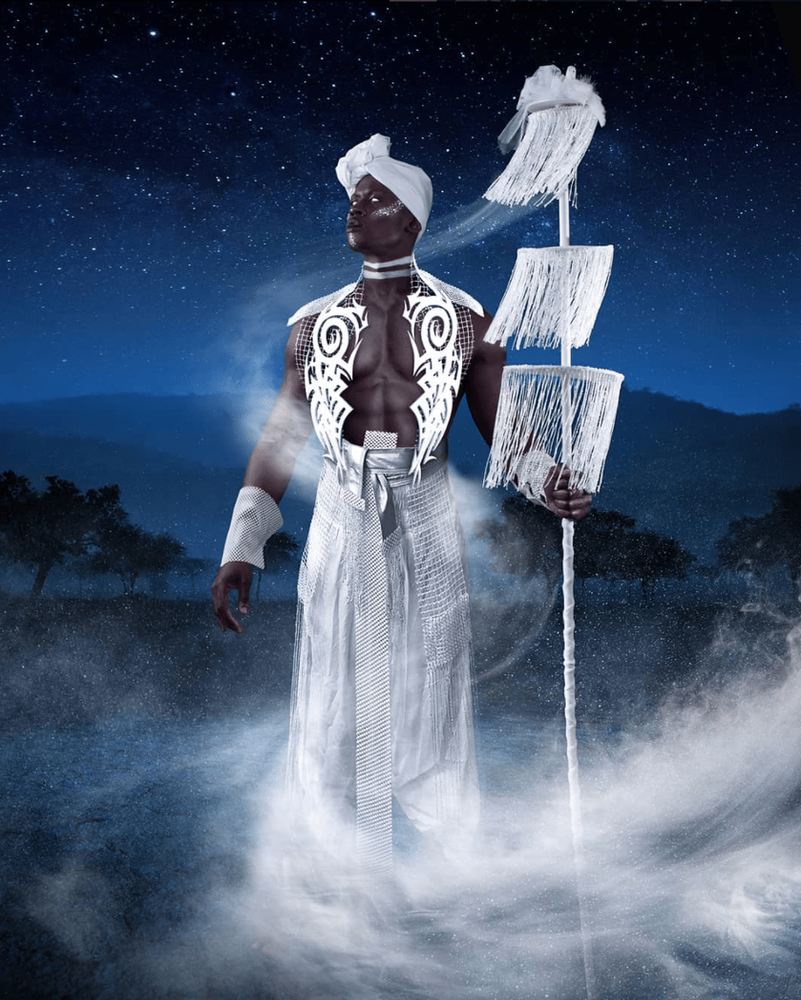
To the ,Nuer people of South Sudan, as well as the ,Dinka, God is addressed in prayers of petition only after recourse to the secondary divinities has been exhausted. The Nuers’ believe in the coming of God through rain, lightening and thunder, and that the rainbow is the necklace of God. The Nuer refer to this God as Kwoth (a word that also means “spirit,” or “breath”), or as Kwoth Nhial; among the Dinka, the supreme being is known as Nhialic, which might be translated as “sky.” Kwoth created humans and kept a rope hanging from heaven and Earth so when they became old, they could climb up to heaven and there remain young. The Nuer and Dinka peoples belong to the Nilotic group of the Nilo-Saharan language family and inhabit the savanna and the upper Nile in the southern part of the Republic of the Sudan. Both are characterized by their fierce sense of independence.
There is a story that one day a hyena and a weaver-bird entered heaven by that same rope. God told them they should be watched and can’t return to Earth because they would cause trouble. They ended up escaping one night and went down the rope anyway. Just before they reached Earth, the Hyena cut the rope and the upper part of it was pulled into heaven. Now, the humans that were to grow old must now die.
Africa has so many different tribes with many different languages and culture styles that many of the traditions and values cross over heavily into one another. Many religions have in common that they try to communicate with God in forms of prophets, rituals, and mediums. They have shamans and witch doctors as well as ,Griots, who are people that preserved genealogies, historical narratives, and oral traditions of their people; singing praises and playing instruments like the long-necked harp lute with 21 strings. They were also big storytellers, advisers and diplomats. Regardless, Africans still worship their Gods, as well as their ancestors, spirits, telling stories and continuing to keep their vast culture afloat. And even though, only four Gods are mentioned here, there is an endless list of Gods worshipped by Africans.


